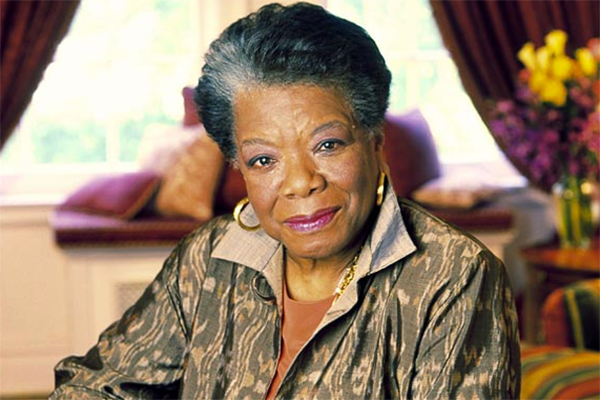Hughes’ poem “Mother to Son” was first published in Crisis magazine in December 1922. It reappeared in The Weary Blues, Hughes’ first collection of poetry, in 1926. The poem is addressed from a mother to a son, warning him about life’s obstacles.
Mother to Son: About the Poet
Langston Hughes (1902-67) was an African American poet. He was born in Joplin, Mississippi. He lived in Mexico for a period of time during his youth and spent a year at Columbia University. He spent his career serving as a merchant seaman and working in a Paris nightclub where he showed some of his poems to Dr. Alan Locke, a strong supporter of African American Literature.
After returning to the United States, Hughes went on to publish fiction, plays, essays, and biographies. He also founded theatres and gave public readings. He became an important force in the Harlem Renaissance of 1920 to 1940. The Harlem Renaissance drew new attention to and redefined the unique African American culture of art, music, and dance.
Mother to Son: Summary
In Hughes’ poem “Mother to Son,” a mother advises her son that he will face many adversities in life, and yet he must overcome them and keep going. The mother compares the journey through life to ascending a staircase. She says that for her, life has not been a staircase made of crystal. Rather it has been quite rough with protruding nails and pieces of wood jutting out, boards were torn up, and places where the carpet was missing. However, she has kept climbing through landings, corners, and darkness in spite of such discomforts. She then asks the boy to walk in her footsteps and keep moving forward without turning back or giving up because he finds the journey arduous. She wants him to take inspiration from the fact that she is still going steady despite life’s hardships.
Mother to Son: Analysis
The anonymous mother in the poem may be suggestive of the African American women of pre-depression America encouraging their sons to strive for success. The poem is written in the form of a dramatic monologue in black dialect. The idiomatic style of the speech is invoked in the context of the courage, endurance, and sense of duty of the African American race. The language also imparts a charged colloquial element to the poem. The theme of the poem is perseverance.
As the poem opens with “Well, son, I’ll tell you,” it is possible that the son has asked or said something before to which she is responding. In the next line, she says that her life “ain’t” been a “crystal stair.” The use of the word “ain’t” indicates that the mother is not a learned person, and “crystal stair” is symbolic of smoothness, beauty, and luster.
“Tacks,” “splinters,” “boards were torn up” suggest hurdles of life. Tacks are nails, and splinters are small fragments of wood that make it hard for the person to step. Boards torn up may symbolize unsteady or rough grounds leading to uncertainty in the person’s mind. “Bare” suggests scant furnishings.
“I’se been a-climbin’ on,” “reachin’ landin’s,” “turnin’ corners” suggests movement and therefore signifies an ascent that is inspiring. “And sometimes goin’ in the dark / Where there ain’t been no light” makes this poem a story of dark times. The dilapidated staircase is also representative of the poor living conditions of the Black Americans under the tyranny of the Whites.
The poem is suggestive of the effect of racism and oppression on the lives and experiences of black Americans. However, this piece of advice from mother to son has a universal quality. It can be read as an advice from any mother to any son, anywhere in the world, without keeping the historical background in mind.
In the next five lines, the mother urges her son not to “turn back” or “set down on the steps” of “fall” when he recognizes life for the never-ending drudgery that it truly is. She does not want him to lose courage, start descending or get tired, sit down to rest, and not resume climbing. She also does not want him to “fall,” which may mean literally tumbling down the steps unable to take the pressure, or it may be associated with the Biblical “Fall,” which in this context may mean resorting to criminal activities and unfair means to accomplish his ends.
In the last three lines, she reveals her own strength and perseverance as she says, “I’se still goin’, honey,/ I’se still climbing/ And life for me ain’t been no crystal stair”. She tries to pose as a role model for the boy and instill strength and courage into his mind to help him undertake life’s tedious journey in the best possible way.
Mother to Son: Poetic Devices
The poem is written in free verse and has a lyrical quality due to the idiomatic language used by the poet.
The poetic device involved in the poem is the extended metaphor of life being a staircase. The central image of the poem is the “crystal stair.” It echoes the Biblical story of Jacob’s Ladder. The stairway may be seen as a path to freedom and liberation, which was the goal of the African Americans.
To represent the struggle of the mother, Hughes uses images of “tack,” “splinter,” “boards,” and “carpet.”
The mother’s drive and persistence are expressed through the images “a-climbin’ on,” “reachin’ landin’s,” “turnin’ corners,” and “And sometimes goin’ in the dark / Where there ain’t been no light.”
The mother teaches them that he should never collapse under the pressures that life puts him through. Hughes uses repetition in “don’t you turn back./Don’t you set down on the steps./’Cause you find it’s kinder hard./Don’t you fall now” to emphasize the mother’s anxious expectation of her son. She wants him to be tenacious like herself.
He uses repetition in “I’se still goin’,” “I’se still climbing,” once again putting stress on the mother’s struggles and weariness.
The image of the “crystal stair” is repeated in the last line to accentuate the perpetual toil again to achieve goals and fulfillment.
Some online learning platforms provide certifications, while others are designed to simply grow your skills in your personal and professional life. Including Masterclass and Coursera, here are our recommendations for the best online learning platforms you can sign up for today.
The 7 Best Online Learning Platforms of 2022
- Best Overall: Coursera
- Best for Niche Topics: Udemy
- Best for Creative Fields: Skillshare
- Best for Celebrity Lessons: MasterClass
- Best for STEM: EdX
- Best for Career Building: Udacity
- Best for Data Learning: Pluralsight

















Thank you! It’s help me alots.
I am much impressed with this analysis. In fact, the poem is so educative in today’s life to our young generation.Many thanks to you.
Really helpful.thanks for the effort made.
Thankyou… Thanks a lot for this essay. This web site is very helpful for me. And the summary was made very scientifically and literally.
May I simply say what a relief to find an individual who
actually understands what they are discussing on the
net. You certainly realize how to bring a problem to light and
make it important. A lot more people ought to look at this and understand this side of the
story. I can’t believe you are not more popular because you surely have the gift.
This article is very helpful. Thank you!
I have visited so many sites, for the analysis of this Poem. But after a comprehensive search, I got to understand that no site has given a detailed analysis of the poem than here. Big ups to you all
I really appreciate your hard work